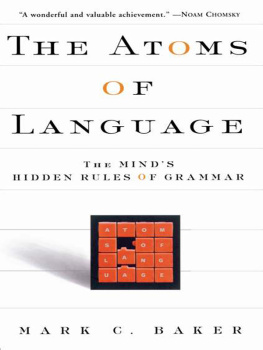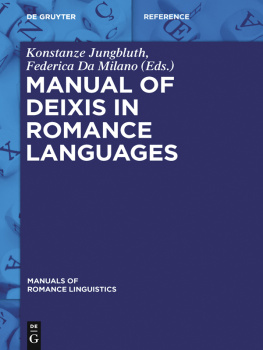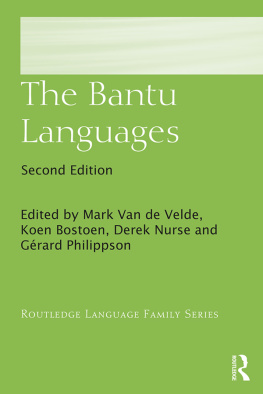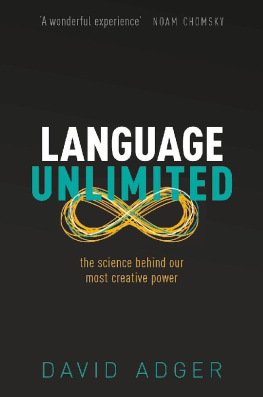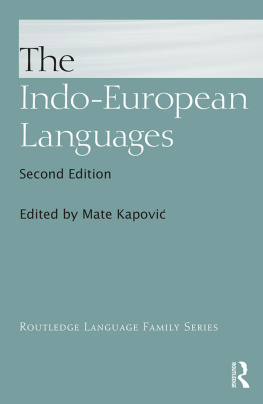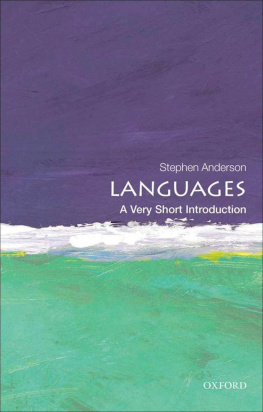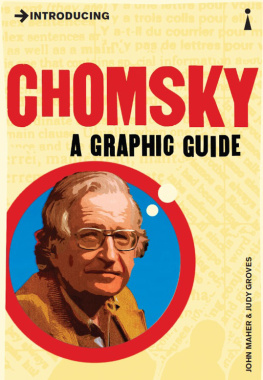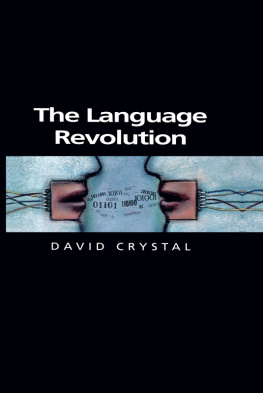Preface
W HO OF US, PRIOR TO OUR FIRST CHEMISTRY CLASS, would have imagined that a tasty white condiment like table salt is made from equal parts of an explosive gray metal (sodium) and a poisonous green gas (chlorine)? Yet the chemists tell us it is so; they can even make it before our very eyes. And that is only the beginning of the wonder. Who would have thought that all the multifarious materials we find around us are made up of a mere 100 different kinds of atoms in various arrangements?
There is a similar surprise lurking in the less familiar study of languages, I claim. Some 6,000 languages are spoken in the world today, and for the most part they seem very different from each other. Mohawk, for example, is quite a different thing from Japanese or English or Welsh or Swahili or Navajo or Warlpiri or Hixkaryana. Nevertheless, linguists are discovering that the differences among these languages are created by a small number of discrete factors, called parameters. These parameters combine and interact with each other in interesting ways to create the wide variety of languages that we can observe around us. Even though every sentence of Mohawk is different in its structure from corresponding sentences in English, and every sentence of English is different in its structure from corresponding sentences in Japanese, the formulas for making sentences in these three languages differ in only one factor each. In this respect, parameters can play the same foundational role in scientific theories of linguistic diversity that atoms play in chemistry. The purpose of this book is to give a sense of these fascinating discoveries. Along the way I explain precisely what a language is, what parameters are, and how a small change in parameters can create a large change in languages. I show some of the elegant and surprising similarities that underlie the obvious differences among languages. And I explore curious trivia about obscure South American languages that you can pass on to your friends at parties.
Moreover, the parametric theory of language diversity implies that the day is coming when linguists should be able to produce a complete list of the parameters that define all human languages, just as Dmitry Mendeleyev produced a table of the elements that define all physical substances. By the end of this book, I give a preliminary sketch of what such a periodic table of languages might look like.
This new view of how languages differ has significant implications for how we look at the relationship of language to thought and culture. Some believe that all languages are alike, and thus they attach no significance to linguistic diversity. Others believe that languages are incomparably different and thus their speakers are incapable of truly understanding each other. In contrast to both these views, the parametric theory of language leads to the conclusion that languages are different but commensurable. Their sentences are dissimilar, but their underlying principles are the same. Language differences therefore do not represent radically different worldviews or adaptations to different environments, but neither are they trivial or inconsequential. Different languages offer us slightly different perspectives, which can be compared and correlated to our mutual enrichment. As such, language differences can be seen as being part and parcel of the abilities to understand and interact with the world that make us persons.
Many people whose names are not on the title page and who are not likely to get a dime of the royalties have played a role in bringing this book into being. I hope it will be some comfort to them to see their names appear here, with my heartfelt thanks.
I particularly thank all the people who read the manuscript at one stage or another and told me what they did not understand (and in some places what I did not understand). There are many fewer such sections because of them. They include the linguists Veneeta Dayal, Ken Safir, and Roger Schwarzschild; chemist and fellow lover of analogies Jeff Keillor; biologist and fellow traveler Kyle Vogan; theoretical computer scientist and fellow McCloskey student David Williamson; and representatives of the general public Jean Baker, Linda Baker, Dennis Cahill, and Tammy Knorr.
I also wish to thank David Pestesky, who got me started on the project of figuring out how to present linguistic results in an interesting way to a wider audience, an effort that eventually led to my writing this book. He and the late Vicky Fromkin, together with Joseph Aoun and Guglielmo Cinque, offered extremely detailed and perceptive criticisms of the material that became Chapter 4. Lila Gleitman and Jerry Fodor encouraged early versions of this work and helped me to sharpen my understanding of the relationship among language, concepts, and culture through the seminar they led at Rutgers University. Noam Chomsky and Steven Pinker gave helpful encouragement and suggestions when I was putting together the overall plan of the book and deciding how to approach the topic. Zsuzsa Nagy helped track down references, check typological generalizations, and find material on obscure languages. Thanks also to my Rutgers students who were the willing guinea pigs for much of this material in my typology class.
I also thank the many speakers of other languages who have patiently shared their invaluable knowledge with me. They include: Grace Curotte, Frank and Carolee Jacobs (speakers of Mohawk), Uyi Stewart (speaker of Edo), Sam Mchombo (speaker of Chichewa), and Ahmadu Kawu (speaker of Nupe). I would have much less to offer the world if it were not for them.
I thank Bill Frucht, my editor at Basic Books. We may not agree about basketball teams, but he recognized the potential of this project early on and has been an essential sounding board for what is interesting and what is not. He also tightened up my prose greatly, pointing out to me that it is not ideal to begin four consecutive sentences with however.
Finally, I thank my family and the small group that meets Sunday nights in our home for supporting me throughout the whole process, keeping me sane and focused on the ultimate goal.
And as always S.D.G.which for me is also a reminder to Still Do Good.
Mark C. Baker
1
The Code Talker Paradox
D EEP MYSTERIES OF LANGUAGE are illustrated by an incident that occurred in 1943, when the Japanese military was firmly entrenched around the Bismarck Archipelago. American pilots had nicknamed the harbor of Rabaul Dead End because so many of them were shot down by antiaircraft guns placed in the surrounding hills. It became apparent that the Japanese could easily decode Allied messages and thus were forewarned about the time and place of each attack.

